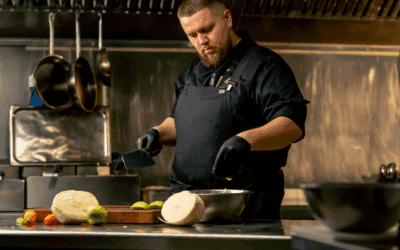Navigating complex negotiations is much like playing a game of chess – every move and strategy matters. The ability to recognize and apply the nuances of negotiation strategies can be the key to securing the ideal agreement when you need to negotiate your consulting agreement, rather than settling for less.
Enter BATNA and ZOPA: these aren’t just academic terms, but practical guides that help negotiators navigate the intricate landscape of discussions and decisions. Instead of diving into abstract definitions, let’s use a real-world story to illustrate these concepts.
Our central character is NewCo, a utility company that embodies Tom Peters’ philosophy: “Excellent firms don’t believe in excellence – only in constant improvement and constant change.”
After investing in new generation plants for several years, the company is grappling with rising operational costs and revenue pressures. NewCo is determined to reinvent its operating model and, as a result, the Executive Management team embarks on a 2-phase project (diagnosis + implementation).
Following the RFP process, they decide to collaborate with their incumbent Consulting Partner, a one-stop-shop with a significant presence. They are banking on the expertise of the senior partner leading the project and the close client relationship to expedite the project.
Join us as we delve into NewCo’s journey, highlighting the pivotal role of negotiation tools in shaping successful outcomes when you need to negotiate your consulting agreement.
1. Applying BATNA – What to Look For
BATNA, or Best Alternative to a Negotiated Agreement, refers to the “fallback” option, in other words, what to do if the current negotiation results in an impasse. Before you start your negotiation, you should build the alternatives, the “no-deal options.” Then evaluate each alternative and calculate the value of pursuing each one.
When you are done, you can choose a course of action that would have the highest expected value: the BATNA. Finally, determine the reservation value –the lowest-valued deal you are willing to accept. When the value of the deal proposed to you is lower than your reservation value, it is better to reject the offer and pursuing the BATNA. If the final proposal is higher than the reservation value, then you should accept the offer.
The NewCo’s team has led a robust RFP process with three finalists that remitted strong proposals. In case the negotiation is stuck or ends with a “no-deal,” they know that John Doe Consulting, the second runner, will be a reliable alternative.
They have discussed the price they were willing to pay for the project. The project has been separated into 2 phases with individual pricing and a go-no-go option at the end of phase 1. They think that Consulting Partner’s proposal is solid but want to shorten the first phase from 8 to 5 weeks. They also want to lower the price for phase 1 from $125K to $50K, and phase 2 from $380K to $300K. Their total budget is roughly $400K.
They decided that their reservation values were for phase 1 – 6 weeks and $75K, and $350K – for phase 2.
2. Successfully Applying ZOPA
The consulting firm in front of you has a BATNA too. The ZOPA (Zone of Possible Agreement) is the foundation for BATNA: it is the range of deals acceptable for both you and the Consulting firm compared to your respective BATNAs.
ZOPA shows how much value is being created in the deal. Where you end up in the ZOPA reflects how much of the value you capture for yourself.
Consulting Partners has remitted a high price for the project. As the incumbent, they have rarely been in a relevant competition at NewCo. They understand that this time NewCo is serious about working with the best Consulting firm. They are willing to lower their price to keep the account. They are ready to go down to $90K for phase 1 and 6 weeks with the same scope, and $300K for phase 2.
If you carefully examine, NewCo and Consulting Partners have a ZOPA on phase 2 but not on phase 1. That means that they have to look at a trade-off.
3. Understanding the Trade-off between Scope and Budget
To define your options, you need to know your priorities and how they translate into the project’s scope and price. What are the compromises you are willing to make?
Maybe the best alternative is to increase the fee. Optionally, you can reduce the scope. You always need to understand how you can work in the middle to achieve the best trade-off.
During scoping, you need to think about the “must-haves” first, then your budget and perceived value. Look at the options you have and consider the nature of the project to identify the best combination scope plus the price.
A Consulting firm can almost always reduce their fees by 10-15% as a commercial gesture. Any further discount will require some trade-offs. Note that many consulting firms are starting to present their price with a built-in discount based on an arbitrarily defined price point. Don’t hesitate to push for another discount.
Remember scope and fee are negatively related: reduce the scope for the fee you are willing to pay or increase the fee for the scope you want to include.
After a few back and forths, NewCo and Consulting Partners have found an agreement on phase 2 for $350K. However, they are still negotiating on phase 1. Consulting Partners has lowered the price to $90K and the length to 6 weeks, but are not willing to go further. They argue that between the internal diagnosis and the external interviews, they are almost at cost. They offer to narrow the scope of the external benchmark to reach $75K as asked by the client and shorten the diagnosis to 5 weeks.
NewCo executives gather to discuss the opportunity, but very quickly, they agree that the external benchmark is a “must-have.” While looking at the other proposals, they realize that the other consultants have proposed between $80K and $100K for phase 1 over 6 weeks. They decided to adjust their reservation value to $90K for 6 weeks. They ask Consulting Partners to give extra effort on phase 2.
The agreement is signed soon after that, with phase 1 – $90K for 6 weeks, and phase 2 – $315K.
4. Taking Advantage of Overlooked Savings Opportunities
When you handle several consulting projects a month, you learn how to decode a proposal and find the pools of potential savings.
Travel Expenses
Many consultants typically include travel & expenses or “out-of-pocket” expenses to the proposal as an additional expense. However, some consultants remit an “all-inclusive” price where the expenses are already included in the price. For some projects, when you know you will have little travel, you might want to exclude the travel & expenses from the proposal and bill separately. In general, we recommend imposing respect for your own Travel Policies, with an upfront validation for large expenses.
SG&A
Some consulting firms can add 5-10% for SG&A expenses to the proposal. They include copies, telephones, among other things. It is always a good starting point for price negotiations. This category is also an easy 5% discount to please the procurement team (that will hit their savings targets). Don’t hesitate to challenge it.
Experts Working on the Project
Ask yourself if you need all the experts on the proposal, and if yes, do you need them as much as budgeted. Sometimes decreasing the presence of expert consultants on a project slightly can help you gain a precious 10%.
Team Ramp-up and Ramp-down
Many proposals are built up with 100% of the team starting on day 1. However, you rarely have everyone in the starting blocks. You might miss some data from the client or need to organize a few meetings with the teams to launch the project. In the same way, you don’t necessarily need the full team until the end of the project. Optimizing the ramp-up/ramp-down can yield substantial savings.
External Expenses
If the proposal contains some external expenses such as market research or expert interviews, you can negotiate to pay directly for them. As a larger company than the consulting firm, you will probably be able to negotiate a better price and avoid the markup from the consultants.
READ MORE: How to Negotiate with Consultant – The Definitive Guide (2023)
Conclusion – Negotiate Your Consulting Agreement
The art of negotiation is a symphony of strategy, insight, and understanding. Through the journey of NewCo, we see the tangible benefits of harnessing frameworks like BATNA and ZOPA to negotiate your consulting agreement. They serve not just as negotiation tools, but as guiding lights, helping organizations identify their priorities, boundaries, and areas of compromise.
Moreover, recognizing often-overlooked savings opportunities can be the key to achieving a more favorable deal, proving that the devil truly is in the details. As you move forward in your future negotiations, remember the importance of preparation, understanding, and strategy. Armed with these tools and insights, you’re well-equipped to navigate the complex arena of negotiation, ensuring beneficial outcomes for all involved parties.
negotiate your consulting agreement negotiate your consulting agreement negotiate your consulting agreement
negotiate your consulting agreement negotiate your consulting agreement negotiate your consulting agreement
negotiate your consulting agreement negotiate your consulting agreement negotiate your consulting agreement
negotiate your consulting agreement negotiate your consulting agreement negotiate your consulting agreement









0 Comments